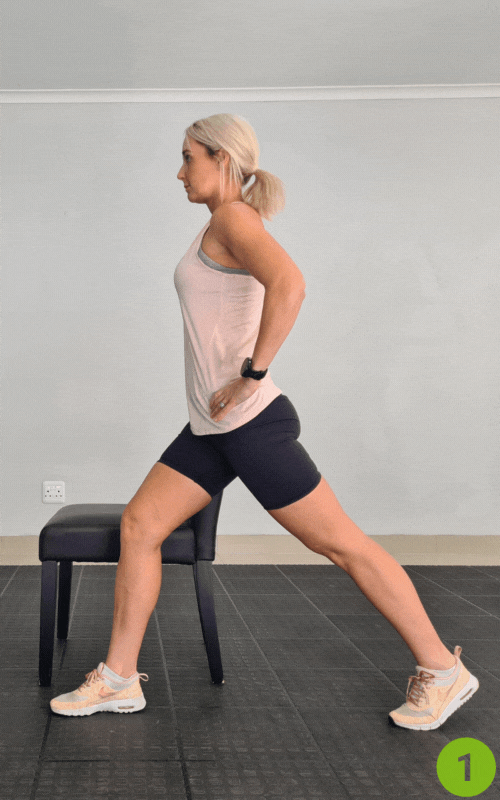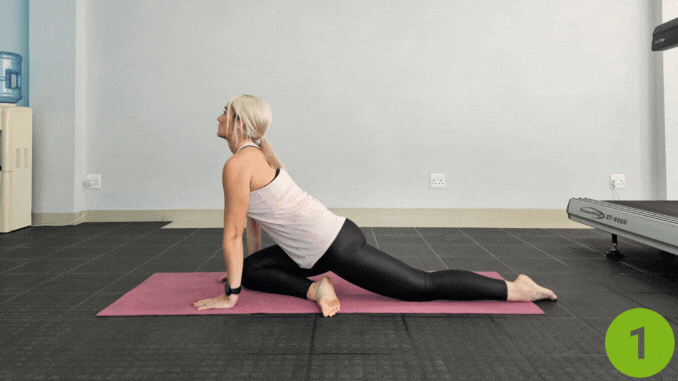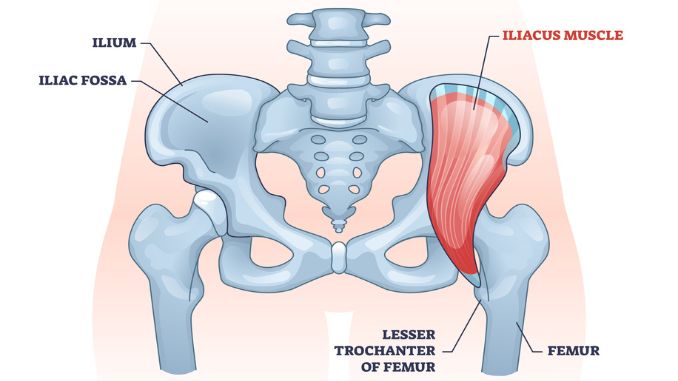The iliacus muscle is part of the hip flexor group, which includes the psoas major, rectus femoris, and sartorius, playing a crucial role in hip flexion and movement.
Hip flexors are essential for daily activities like walking, running, and climbing stairs, and tightness in these muscles can lead to discomfort and pain in the hip and lower back.
Understanding how to stretch iliacus muscle properly is key to relieving this tightness, improving mobility, and preventing further strain or injury.
The iliacus muscle works synergistically with other hip flexors to enable hip flexion, bringing the leg or upper and lower body closer together.
- Where it starts: The iliacus muscle begins on the inside of your hip bone, in a curved area called the iliac fossa.
- Where it ends: It attaches to the top of your thigh bone (called the lesser trochanter of the femur).
- What it does: This muscle helps you lift your leg—like when you’re walking, climbing stairs, or doing sit-ups.
- Who it works with: It joins with another muscle called the psoas. Together, they’re called the iliopsoas, one of the body’s strongest hip flexors.
- Why it matters: If this muscle gets tight, it can pull on your hip and cause pain in your upper thigh or lower back. It may also cause your pelvis to tilt forward (called anterior pelvic tilt).
Stretching the iliacus [2] can help improve hip flexibility and reduce hip and back tightness.
1. Kneeling Hip Flexor

- Start by kneeling on your left knee with your right leg bent in front, keeping your right foot flat on the floor.
- Place both hands on your right thigh or rest your left arm on your hip for balance.
- Slowly press your hips forward until you feel a deep stretch in the left thigh and around the hip joint.
- Hold this position for 15 seconds, then return to the starting position.
- This position targets tight hip flexors, especially the iliacus and psoas muscles.
- Make sure to keep your knee straight, chest upright, and switch sides to repeat the stretch on the other leg. Complete 3 sets.
Dr. Andy Fata-Chan, a physical therapist practicing in New York, emphasizes that effective hip-flexor relief involves more than simple stretches—mobilizing and lengthening the iliacus (and psoas) are key. One recommended stretch that engages the iliacus (alongside the broader hip‑flexor group, including the iliopsoas) involves the kneeling hip flexor lunge:
2. Lunge Stretch

- Begin in an upright standing position, maintaining good alignment with your head, shoulders, and hips.
- Bend your knees and lower your body until the back of your right knee is a few inches from the floor.
- Ensure that both your knees are bent about 90 degrees.
- Rest your hands on your left thigh or hips. This stretch deeply activates the hip flexors, particularly in the right leg, targeting the psoas muscle.
- It’s great for improving flexibility in both the right thigh and left hip.
- Switch legs after holding the position for several breaths. Complete 3 sets.
3. Butterfly Stretch

- Begin in an upright sitting position on the floor with your knees bent and feet flat on the floor.
- Bring the soles of your feet together and straighten your spine.
- Engage your core. Hold your feet and let your knees drop toward the floor to stretch the inner thighs.
- Hold this position for several deep belly breaths, in through your nose, out through your mouth.
- Return to the starting position and repeat the movement.
4. Bridge Pose

- Lie on your back with both knees bent and your feet flat on the floor.
- Place your arms at your sides, then press through your left foot and right foot to lift your hips upward.
- Keep your core tight and raise your hips until your body forms a straight line from shoulders to knees.
This movement stretches the front of the hips and strengthens the glutes, helping to reduce tension in the hip flexors. It also supports better pelvic alignment, which benefits the iliacus muscle over time.
5. Pigeon Pose

- Begin in a plank position and slide your left knee forward, placing it near your right wrist with your left foot angled across your body.
- Extend your right leg straight behind you with the right knee resting on the floor.
- Keep your upper body upright at first, then slowly lean forward over your left thigh to intensify the deep stretch in your left hip.
- This pose is one of the most effective psoas stretches, also benefiting the iliacus by releasing deep-seated tension. Repeat on the other leg
Key Functions of the Iliacus Muscle

- Works with the psoas as part of the iliopsoas muscle group [1].
- Main job: Helps lift the leg at the hip (hip flexion).
- Helps stabilize the pelvis (hip area) during certain standing movements.
- Separately activated from the psoas in some tasks, meaning it can work alone when needed.
Iliacus Muscle Pain – Key Symptoms
- Front hip or groin pain – sharp or aching, especially when lifting the leg or bending at the waist.
- Lower back discomfort – may radiate from the hip.
- Tightness in pelvis or SI joint – often confused with sciatica.
- Hard to stand upright – hips may feel “stuck” or tight.
- Pain climbing stairs or walking – especially when lifting the left or right leg.
- Tenderness when pressing inside the front of the hip.
- Referred pain – may travel to the thigh or knee.
Common causes: sitting too long, overuse, or poor posture.
Benefits of Stretching the Iliacus Muscle
- Less hip and back pain [3] – Stretching the iliacus muscle can reduce its tightness or stiffness.
- Better movement – Improves how your hips bend and move.
- Fewer injuries – Keeps your muscles balanced and flexible.
- Improved performance – Great for walking, running, and workouts.
- Loosens psoas – Reduces deep hip tightness.
- Easy to do daily – Short stretches like kneeling hip flexors can really help.
Preventing Future Tightness
- Incorporating regular stretching and strengthening exercises into your daily routine can help prevent future tightness and imbalances in the iliacus muscle and hip flexors.
- Engaging in activities that promote hip flexion, such as leg raises and lunges, can help strengthen the iliacus muscle, improve overall hip health, and show you how to stretch the iliacus muscle effectively.
- Maintaining good posture and avoiding prolonged sitting can also help reduce the risk of tightness and discomfort in the hip and lower back.
- Taking regular breaks to stand, stretch, and move can help reduce the risk of psoas muscle tightness and improve overall mobility.
Conclusion
Stretching the iliacus muscle is an easy and helpful way to reduce hip and back pain, improve movement, and feel more comfortable in daily activities. If you’re wondering how to stretch the iliacus muscle, simple moves like the kneeling hip flexor, lunge, or pigeon pose can effectively loosen tight hip flexors and promote better posture.
Doing these moves regularly can keep your hips healthy, lower your risk of injury, and make walking, running, or sitting feel better. A little stretch each day goes a long way!
Incorporate these effective stretches daily to relieve hip tightness and pain—check out our Unlock Your Hip Flexors program for deeper relief and improved mobility.
FAQ’s
How to Release a Tight Iliacus Muscle
To release a tight iliacus, try manual therapy from a physical therapist, or use targeted stretching and deep breathing. Use a foam roller around the hip bone and upper thigh. If the left leg is tighter, focus more there. Pelvic tilts help relax the muscle, especially in those with anterior pelvic tilt. Active release techniques are also effective for reducing iliacus pain.
What are the symptoms of a tight iliacus?
A tight iliacus causes deep iliacus pain near the hip bone, groin, or upper thigh. Pain may worsen during walking or sitting. Those with anterior pelvic tilt often feel stiffness or imbalance, especially in the left leg. You might notice trouble standing upright or rotating the torso. A physical therapist can assess and confirm if the iliacus is causing these symptoms.
How to stretch the iliac crest muscle?
The iliacus, attached to the iliac crest of the hip bone, is best stretched with kneeling lunges. Tuck the pelvis under to counter anterior pelvic tilt and lean forward. Stretch one side at a time—focus on the left leg if that’s the tight side.
Which exercise would best stretch the iliopsoas?
The best stretch for the iliopsoas is the deep kneeling lunge. With your left leg back, tuck the pelvis and raise your arms. This targets the iliacus and psoas, releasing tension along the hip bone and upper thigh. Prevent anterior pelvic tilt by tightening your core. For lasting results, work with a physical therapist, especially if iliacus pain affects your movement.


